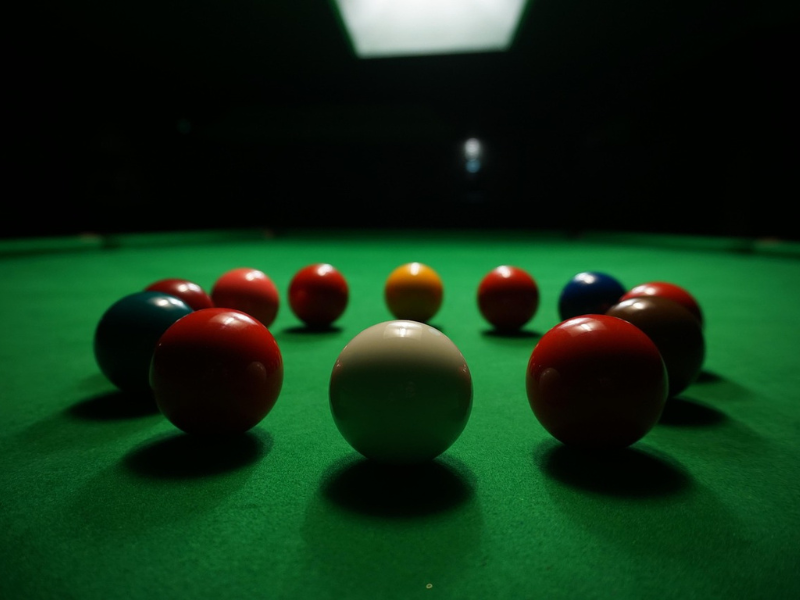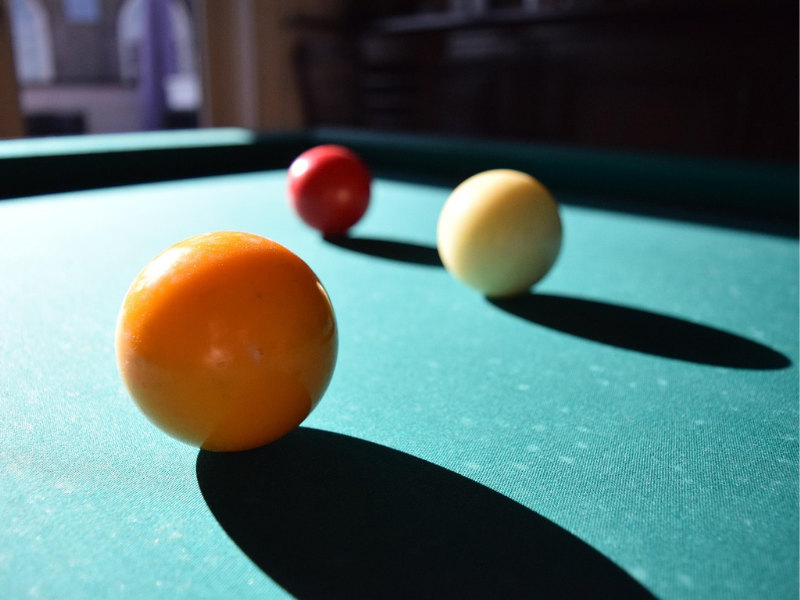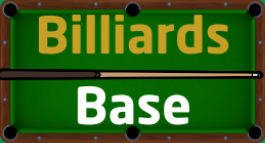Your snooker cue is far more than just a stick for striking balls, it’s the primary interface between your technique and the table, directly influencing accuracy, consistency, and overall performance. Unlike pool, where cue selection might be more forgiving, snooker’s emphasis on precision, delicate touch, and extended play sessions makes choosing the right cue absolutely critical for developing proper technique and enjoying the game.
Whether you’re a complete beginner selecting your first personal cue, an intermediate player looking to upgrade, or an advanced player considering custom options, understanding what makes a quality snooker cue and how different features affect your game is essential. Poor cue selection can hinder skill development, while the right cue becomes an extension of your natural stroke, facilitating improvement and consistency.
What Makes a Great Snooker Cue?

Having a great snooker cue can be largely subjective to an individual player’s taste and preferences. But, so long as it’s a cue that’s intended for snooker, follows the correct range of technical specifications, and feels good to use by you, it’s probably a good snooker cue.
Snooker cues can be an expression of the player, with even the most famous snooker players becoming attached to a specific stick that they wheel out each tournament for years on end.
Essential Technical Characteristics
Weight Distribution and Balance:
- Standard weight range: 17-19 oz (480-540g)
- Balance point: Typically 16-18 inches from butt end
- Weight consistency: Even distribution without dead spots or irregularities
- Personal preference: Heavier cues offer more power, lighter cues provide better control
Length Specifications:
- Standard tournament length: 57-59 inches (145-150cm)
- WPBSA regulation: Maximum 60 inches allowed
- Personal fitting: Should complement your height and arm reach
- Table compatibility: Longer cues better for full-size tables
Tip Characteristics:
- Diameter: 9-10mm (smaller than pool cues)
- Material: Layered leather (elk, pig, or cow hide)
- Hardness: Medium to medium-hard for optimal chalking and durability
- Shape: Rounded dome for consistent contact
Construction Materials and Quality
Snooker balls are no joke, they can break the tip off of your cue in an instant if the manufacturer skimped out on quality. That’s why it’s important to do your research and make the right purchase the first time.
Shaft Woods:
- Ash: Traditional choice, excellent stiffness-to-weight ratio, distinctive grain
- Maple: Harder wood, smoother surface, preferred by many modern players
- Composite: Synthetic alternatives offering consistency and durability
Butt Construction:
- Solid wood: Single piece construction for maximum stability
- Spliced butt: Multiple wood types for aesthetic and performance balance
- Weight bolts: Adjustable systems for fine-tuning balance
Joint Types:
- 3/4 joint: Splits 18 inches from butt, minimal impact on feel
- 1/2 joint: Center split for maximum portability
- One-piece: No joint, maximum rigidity and feel transmission
Ferrule and Tip Assembly:
- Brass ferrules: Traditional, good weight distribution
- Synthetic ferrules: Modern materials offering durability
- Tip adhesion: Quality of tip-to-ferrule bonding affects longevity
Snooker Cue Types and Styles

Construction Categories
One-Piece Cues:
- Advantages: Maximum rigidity, no joint flex, traditional feel
- Disadvantages: Transportation challenges, storage requirements
- Best for: Home players, clubs with permanent setups
- Length: Full 57-59 inches
- Price range: £50-£500+ depending on quality
Two-Piece (3/4 Joint) Cues:
- Advantages: Portable, minimal feel impact, professional standard
- Disadvantages: Slight joint flex, higher cost than one-piece
- Best for: Tournament players, frequent travelers
- Joint position: 18 inches from butt end
- Price range: £100-£2000+
Two-Piece (1/2 Joint) Cues:
- Advantages: Maximum portability, compact storage
- Disadvantages: More noticeable joint flex, potential feel changes
- Best for: Casual players prioritizing convenience
- Joint position: Center of cue
- Price range: £75-£800
Specialization Categories
House Cues:
- Purpose: Venue-provided equipment for casual players, use these if you don’t know how to break in Snooker well enough yet
- Construction: Usually one-piece, basic materials
- Weight range: 16-20 oz (often unmarked)
- Quality: Variable, designed for durability over precision
Personal Cues:
- Purpose: Individual ownership for consistent feel and performance
- Construction: Range from basic to professional quality
- Customization: Weight, length, and tip preferences
- Investment: £100-£1000+ depending on level
Custom Cues:
- Purpose: Bespoke construction for specific player requirements
- Construction: Hand-crafted by specialist cue makers
- Customization: Every aspect tailored to individual preferences
- Investment: £800-£5000+ for master craftsman work
Feature Specifications Comparison
| Cue Type | Length | Portability | Feel Quality | Price Range | Best For |
| One-piece | 57-59″ | Low | Excellent | £50-£500 | Home/club players |
| 3/4 joint | 57-59″ | High | Very good | £100-£2000+ | Tournament players |
| 1/2 joint | 57-59″ | Very high | Good | £75-£800 | Travel/casual players |
| House cues | Variable | N/A | Basic | N/A | Venue equipment |
| Custom | Player choice | Variable | Exceptional | £800-£5000+ | Serious/pro players |
How to Choose the Best Cue for You

Step-by-Step Selection Process
Step 1: Assess Your Playing Level and Commitment
Beginner (0-2 years playing):
- Priority: Developing consistent technique
- Cue requirements: Standard weight (18-19 oz), quality construction, affordable
- Features to avoid: Extremely light or heavy cues, novelty designs
- Budget recommendation: £100-£300
Intermediate (2-5 years playing):
- Priority: Refining technique, playing more frequently
- Cue requirements: Personal preferences emerging, higher quality materials
- Features to consider: 3/4 joint for portability, premium tips, better balance
- Budget recommendation: £250-£700
Advanced/Competitive (5+ years playing):
- Priority: Maximizing performance, tournament play
- Cue requirements: Precise specifications, professional quality, possibly custom
- Features to prioritize: Exact weight/balance preferences, premium materials
- Budget recommendation: £500-£2000+
Step 2: Physical Matching Considerations
Height and Reach Correlation:
- Under 5’6″ (168cm): Consider 56-57″ cues
- 5’6″ to 6’0″ (168-183cm): Standard 57-58″ cues optimal
- Over 6’0″ (183cm): 58-59″ cues for proper reach
Playing Style Alignment:
- Power players: Heavier cues (18.5-19+ oz) for momentum
- Finesse players: Lighter cues (17-18 oz) for touch and control
- All-around players: Medium weight (18-18.5 oz) for versatility
Step 3: Venue and Usage Considerations
Home Table Players:
- Cue type: One-piece or 3/4 joint
- Storage: Dedicated cue rack or wall mount
- Features: Focus on feel over portability
Make sure you’re using the standard snooker table size on whichever table you’re using. This ensures you’re always practicing with the correct conditions in mind. If you need help setting up a snooker table, you can use our guide for that.
Club and Tournament Players:
- Cue type: 3/4 joint essential for transport
- Case: Hard case for protection
- Features: Professional-grade construction, consistent performance
Step 4: Budget and Value Assessment
Entry Level (£100-£250):
- Brands: Peradon Riley series, BCE Jim Wych, basic PowerGlide
- Features: Solid construction, basic materials, standard specifications
- Value proposition: Learning proper technique without major investment
Mid-Range (£250-£700):
- Brands: Peradon Crown series, PowerGlide Connoisseur, entry John Parris
- Features: Premium woods, better joint construction, upgraded tips
- Value proposition: Significant quality improvement, long-term investment
High-End (£700+):
- Brands: John Parris, Stamford, MasterCue, Hunt & Osborne
- Features: Hand-selected materials, master craftsmanship, custom options
- Value proposition: Professional quality, potential heirloom value
Common Selection Mistakes to Avoid
Beginner Pitfalls:
- Choosing based on appearance rather than technical specifications
- Buying extremely cheap cues that hinder technique development
- Ignoring weight and balance in favor of price alone
- Purchasing without trying different weights and styles
Intermediate Mistakes:
- Upgrading too frequently instead of mastering current equipment
- Focusing on brand prestige over actual playing characteristics
- Neglecting maintenance leading to premature replacement needs
The Top Snooker Cues for Every Level (Objective Reviews)
Best for Beginners
Peradon Riley England Series
Price Range: £120-£180
Construction: 3/4 joint, ash shaft, hardwood butt
Weight: 18-19 oz options
Length: 57-58 inches
Pros:
- Excellent build quality for price point
- Consistent weight distribution
- Good starter specification
- Established UK manufacturer with snooker heritage
- Includes quality case
Cons:
- Basic tip quality requires upgrade
- Limited customization options
- Standard design without distinctive features
Best for: New players wanting quality construction without premium investment
BCE Jim Wych Series
Price Range: £100-£150
Construction: 3/4 joint, ash shaft, traditional brass ferrule
Weight: 17-19 oz range
Length: 57 inches standard
Pros:
- Value-focused pricing
- Traditional snooker specifications
- Suitable for developing proper technique
- Wide availability in UK clubs
Cons:
- Basic materials and finishing
- Joint quality adequate but not exceptional
- Limited longevity for serious players
Best for: Budget-conscious beginners or occasional players
Best for Intermediate Players
PowerGlide Connoisseur Series
Price Range: £300-£500
Construction: 3/4 joint, premium ash/maple options, ebony butt
Weight: 17-19 oz with precision grading
Length: 57-58 inches
Pros:
- Significant quality upgrade from entry level
- Excellent balance and feel consistency
- Professional-grade joint construction
- Good resale value
Cons:
- Higher price point than entry cues
- Still mass-produced rather than hand-made
- Standard specifications may not suit all preferences
Best for: Developing players ready for quality equipment investment
John Parris Discovery Series
Price Range: £400-£700
Construction: Hand-crafted 3/4 joint, premium ash shaft, spliced butt
Weight: Custom weight options available
Length: Various lengths available
Pros:
- Hand-crafted quality entering custom territory
- Excellent reputation and resale value
- Superior materials and construction
- Beginning of truly professional-grade equipment
Cons:
- Significant price increase from mass-produced options
- Limited immediate availability (made to order)
- May be more cue than developing players need
Best for: Committed intermediate players planning long-term investment
Best for Advanced/Competitive Players
John Parris Ultimate Series
Price Range: £800-£1500+
Construction: Premium hand-crafted 3/4 joint, selected woods, custom specifications
Weight: Precise custom weighting
Length: Player-specified lengths
Pros:
- Master craftsman construction quality
- Completely customizable specifications
- Exceptional materials and attention to detail
- Strong reputation among professional players
- Excellent long-term value retention
Cons:
- High initial investment required
- Extended lead times for custom orders
- Premium pricing may exceed amateur player needs
Best for: Serious competitive players and professionals
Stamford Cues Traditional Series
Price Range: £600-£1200
Construction: Traditional English craftsmanship, premium materials
Weight: Custom specification available
Length: Traditional 57-59 inch options
Pros:
- Traditional English cue-making techniques
- Excellent build quality and attention to detail
- Distinctive styling and premium materials
- Good value in custom cue market
Cons:
- Less well-known than some premium brands
If you’re somebody that is on their way to competing in major snooker tournaments, then you can afford to pay a little extra on your cue in order to guarantee quality. Going after reputable brands with tons of reviews backing them up, with clearly explained features and materials that justifies their price will steer you in the right direction.
Frequently Asked Questions (FAQs)
What weight and tip size should a beginner choose?
Beginners should start with an 18-19 oz cue with a 9.5-10mm tip diameter. This weight range provides good stability for developing consistent cueing technique without being too heavy to control. The 9.5-10mm tip is standard for snooker and allows proper chalk retention while being forgiving enough for learning basic shot-making. Avoid lighter cues under 17 oz as they can encourage jabby, inconsistent strokes during the learning phase.
Are expensive cues better, or can you get good quality at lower prices?
Quality doesn’t always correlate directly with price, especially for beginners and intermediate players. A well-made £200-£400 cue can serve most players excellently for years. Expensive cues (£800+) offer premium materials, hand-crafted construction, and custom specifications that benefit advanced players who can appreciate subtle differences. The sweet spot for most players is £250-£600, where you get professional-grade construction without paying for premium brand prestige or custom work.
Can you use a billiard cue for snooker?
Pool cues are not ideal for snooker due to significant specification differences. Pool cues typically have 11-14mm tips (vs. 9-10mm for snooker), are shorter (57-58″ vs. 57-59″), and are heavier overall. The larger tip size makes precise ball control more difficult in snooker, while the different balance affects cueing technique. Carom billiard cues are closer in specification but still not optimal. For proper snooker development, use snooker-specific cues.
How long should a snooker cue last?
A quality snooker cue should last 10-20+ years with proper care and maintenance. The shaft wood rarely wears out, though tips need replacement every 6-18 months depending on usage frequency. Professional players may replace tips more frequently for consistent feel. Signs a cue needs replacement: significant warping, joint loosening that can’t be repaired, major damage to the shaft, or when your playing needs exceed the cue’s capabilities rather than age-related wear.
What’s the difference between snooker cues and pool cues?
Key differences include:
- Tip size: Snooker 9-10mm vs. Pool 11-14mm
- Length: Snooker 57-59″ vs. Pool typically 57-58″
- Weight: Snooker 17-19 oz vs. Pool 18-21 oz
- Balance point: Snooker more forward-weighted for control
- Construction: Snooker emphasizes precision and touch, pool favors power transfer
These reflect snooker and pool’s different requirements—snooker’s emphasis on precise positioning versus pool’s focus on potting and break shots.
Choose the Right Cue for You
Selecting the right snooker cue is a personal journey that should evolve with your skills, commitment level, and playing circumstances. The most expensive cue won’t improve your game if it doesn’t match your technique and physical requirements, while the wrong specifications can actually hinder development regardless of craftsmanship quality.
Key principles for successful cue selection:
- Start appropriately for your current level without over- or under-investing
- Prioritize proper specifications (weight, length, tip size) over brand prestige
- Try before buying whenever possible at clubs or shops
- Plan for gradual upgrades as your skills and understanding develop
- Maintain properly to maximize any cue’s lifespan and performance
Progressive upgrade path:
- Beginner: Quality mass-produced cue (£150-£300) focusing on proper specifications
- Intermediate: Premium manufactured or entry custom cue (£400-£700) with personal preferences
- Advanced: High-end custom cue (£800+) tailored to specific requirements and playing style
The most important factor is consistent practice with properly maintained equipment. A well-chosen cue becomes an extension of your technique, supporting natural stroke development and allowing you to focus on tactics, positioning, and the mental aspects that define skilled snooker play.
Recommended steps after buying your snooker cue:
- Snooker Rules Explained to brush up on your knowledge and make sure you don’t accidentally foul on your next game/tournament
